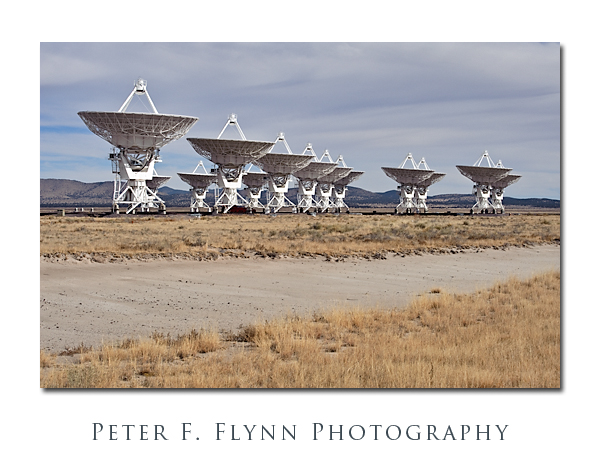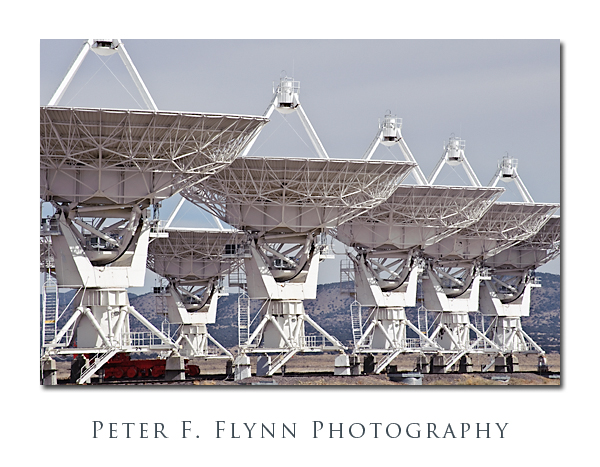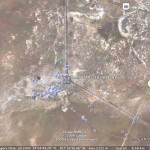
Whilst visiting Bosque del Apache, I decided to race up to the VLA for part of the day – that’s the Very Large Array for you non-geeks. Of course the VLA is so cool that even non-geeks have heard about it, maybe on account of Carl Sagan’s novel named Contact, or as likely perhaps, from the film version.
BTW, I really like this film. One of my favorite parts is the bit where the Tom Skerritt character (Drumlin); who plays a overbearing and unscrupulous science administrator, who tries to steal the glory of discovering a signal of extraterrestrial origin from the Jody Foster character (Arroway), but instead get’s paid back big-time in the most ironical of ways. Not very realistic, but damned entertaining…
Anyway, the first thing you learn when you arrive at the facility is that the US government is not spending your tax dollars using the array to search for evidence of extraterrestrial life, e.g., SETI doesn’t get to access the array. Why the hell not, I ask! The answer comes in the form of the second thing you learn about the array – that the design is pretty much the opposite of what you’d need to conduct a comprehensive search for radio signals indicating the presence of extraterrestrial life. Gads. The third thing you learn is that none of the users of the array actually spend any time there – all internet connections and so forth. Lame, and a pity, since the San Agustin Plain is lovely.

The antennas are laid out on a full gauge railroad track in a Y-shaped arrangement, and although I never saw the base position of the individual antennas change, the orientation of the dishes changes every few minutes. Each antenna is huge by the way, each dish has a diameter of over 80 feet, and the weight of each station is about 230 tons.
I recommend a stop if you are ever in the general vicinity – there is nothing on earth quite like this rig.
Below I include an image from space via Google Earth:

Hmmm… or did they only TELL you they aren’t looking for extraterrestrial life… 😉
Hi A,
Excellent point… I mean, how would we know?!!! You can bet that the black-ops people routinely monitor the RF downloads for complex fuzz. It’s a bit odd that Sagan specifically cites Arecibo and the VLA in Contact, both of which are high res – small angle scopes. I’m thinking that after we roughly locate a coherent signal, we would want naturally turn to the high res antennae.
Cheers,
P.